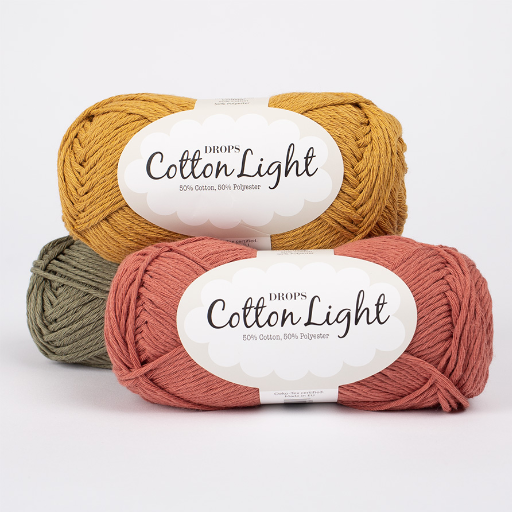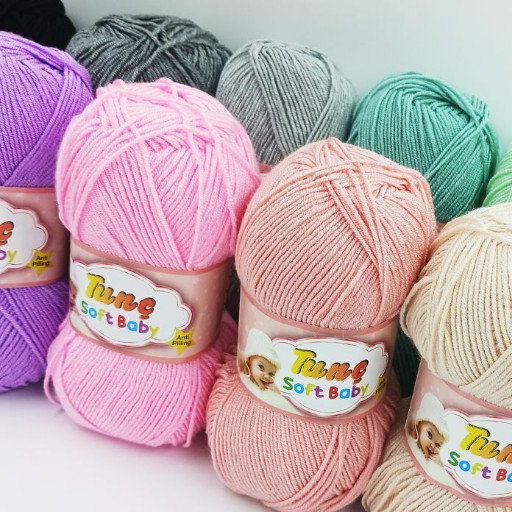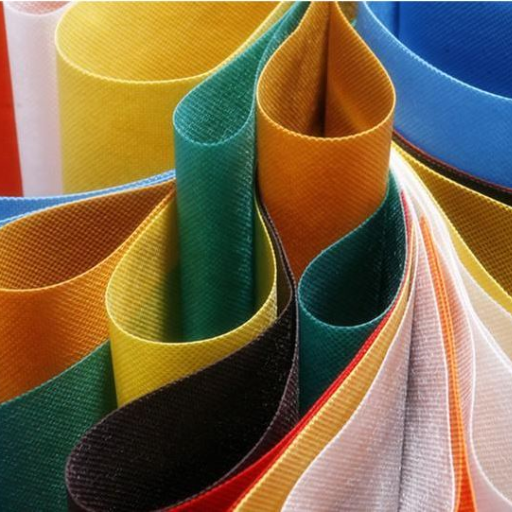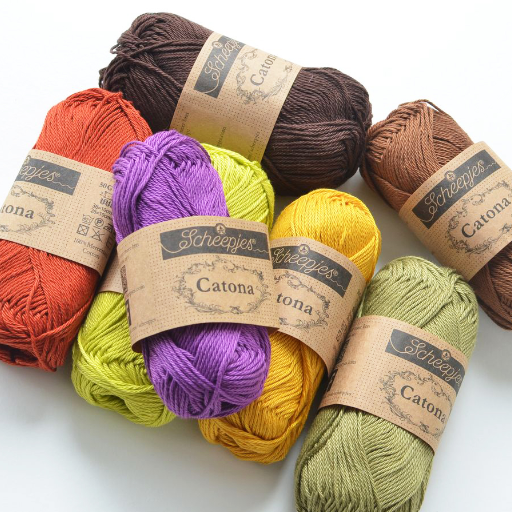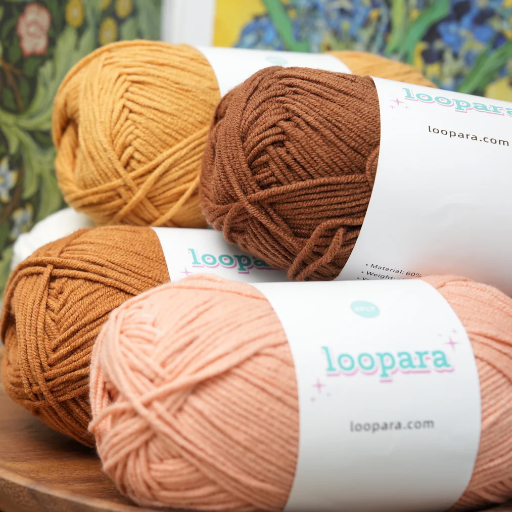When seeking out warmth and comfort, acrylic and polyester are two synthetic materials that one usually thinks of. Both are common in clothing and the making of blankets, but each one has its differences in properties as well as its performance during colder months. This article looks more deeply into the comparison of acrylic and polyester with their insulating abilities, how long they last, and if they are useful in various environments. This analysis will answer the question of which fabric truly works better for the user’s needs and guide them to make the right decision.
What are the Key Differences Between Acrylic and Polyester?

- Insulation: Warmth retention is essential in things like sweaters and scarves as they provide cold-weather apparel, so acrylic is a popular choice because it effectively traps heat and retains warmth. While polyester has lower insulation, it is great for moisture-wicking, which makes it activewear.
- Durability: In durability, polyester takes the lead when compared to acrylic. It has good resistance to stretching, shrinking, and abrasion which makes it a good choice to have for long-term use as well as with items that experience some level of usage. Acrylic on the other hand is more prone to pilling as well as losing its shape over time.
- Moisture Resistance: In humid or wet conditions, polyester serves better because it has superior moisture resistance and dries quickly as compared to acrylic which water resistant and may retain dampness.
- Softness: Acrylic mimics natural fibers such as wool, permitting a softer feel which leads to the greater comfort for certain applications. Polyester softer, smoother and has a more synthetic feel.
How do Acrylic Fibers Retain Heat?
Acrylic fibers are one of the best insulators on the market due to their structure and physical properties which aim to reproduce natural fibers like wool. They consist of long lightweight fibers with a crimped construction that form little air pockets in weave fabrics. These aid in the insulation of body heat and limit the loss of heat in cold surroundings. Furthermore, acrylic’s low thermal conductivity lessens the movement of heat in the material, boosting the fabric’s insulation capabilities. Because of this, acrylic is perfect for winter clothes, the blankets, and other textiles that are designed to keep users warm.
Is Polyester Fabric Breathable?
As a result of its synthetic nature, polyester fabric is often low in breathability because air and moisture does not flow naturally. Blended polyesters and specially engineered treated ones for improved breathability are one of the recent advancements in textile engineering. Modern versions of polyester often use moisture-wicking technologies which gives the fabric the ability to draw sweat away from the skin and evaporate quickly. This works well for sports and activities that require movement as it helps to lower skin temperature and dry the body from perspiration. Heat-trapping polyester is greatly improved in its textile processing for many of its uses where these depend on good ventilation, but not its filling work alone, have added many innovations in textile processing.
Which is More Durable: Acrylic or Polyester?
The sturdiness of acrylic and polyester fabrics poses a difference in the two as polyester tend to perform better due to its structure. Outdoor apparel, upholstery, and other gear that require robust durability get the most benefit thanks to the stretch, shrinkage, and tear resistance of polyester fibers. The longevity of the fabric also increases on exposure to harsh environment because of its UV rays and moisture resistance. On the contrary, acrylic fabrics do not perform as well. Although they exhibit higher endurance and wear resistance, weaker ultraviolet light and moisture damage polyester acrylic fabrics over time making it a less desirable choice. Even after choosing acrylic. Because of the soft, woolly feel and thermal insulation, it does not outlast polyester in stress or wear situations. While acrylic fabrics outperform polyester in softness and thermal insulation, they still lose the durability battle in longevity. Polyesters take the crown for scenarios where durability is a must.
How Does Acrylic Yarn Compare to Polyester Yarn?
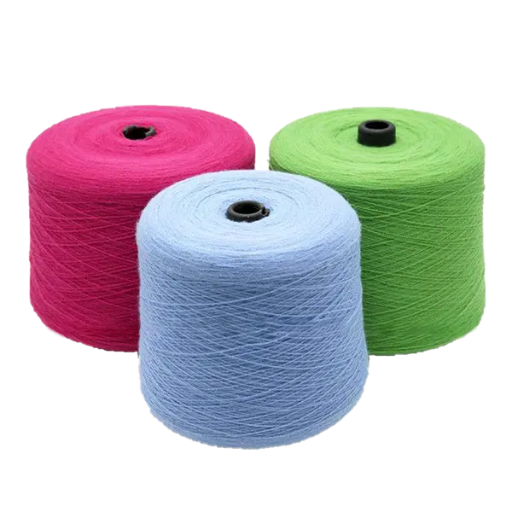
Both types of yarn have a give and take nature wherein acrylic yarn is easier to use as it provides a wool-like feel and superior warmth for projects requiring comfort and insulation, like blankets or winter wear. It is, however, less durable and more prone to wear over time.
Polyester yarn is the other spectrum wherein the synthetic does not feel any soft but stubbornly more durable, resists wear and tear, and have a good track record of pilling. This makes it great to put on upholstery or outdoor fabrics while extending the item’s life. Additionally, polyester tends to retain color better over time. Ultimately, the choice between is based on the specific requirements of the project.
What are the Benefits of Using Acrylic Yarn?
The perks of acrylic yarn are what makes is so popular among crafters, as well as manufacturers. It’s greatest advantage: it being inexpensive. Unlike natural fibers such as wool or cotton, acrylic yarn is much cheaper giving an easier time when trying to accomplish big projects. Alongside this, acrylic yarn comes in a variety of colors, textures, and thicknesses that make it suitable for a variety of projects such as garments, blankets, accessories, and even decorative items.
Also, acrylic yarn boasts effortless upkeep. Because it is washable and dries quickly, it is perfect for making clothing and gear that must endure constant cleaning or exposure to outdoors. Beyond that, the material is light, and is often used to replicate the insulating properties of wool without the extra weight which makes garments bulk free. It is also hypoallergenic, so it’s safe and comfortable for people with allergies or sensitive skin. In general, acrylic yarn is economically practical with multifunctional versatility to acrylic yarn caters to various creative and practical applications.
Is Polyester Yarn a Better Choice for Garments?
Today, polyester yarn remains one of the most popular choices for garment production as its synthetic fibers come with distinct advantages and cost effectiveness in many textile industries. Its abnormal durability serves as both a benefit and a challenge for many depending on the industry. In applications that require frequent use such as activewear, it can withstand considerable abuse from abrasion, containing a low level of wear and tear. Garments are also well known for being stretch and shrink resistant, aiding the longevity of clothing.
Another unique feature of polyester yarn is its moisture-wicking traits. This helps polyester clothes to pull sweat away from the body, drying quickly and improving comfort to users most especially in hot and humid weather. In addition, polyester does not easily get wrinkled or creased, making it ideal for easy-to-care clothing for those who like looking neat without too much upkeep.
While polyester tends to be less breathable than natural fibers such as cotton, there have been strides in textile engineering that have introduced specialty blends and weaves of polyester that are much more breathable and less harsh to the touch. Because of its price, polyester is also cheaper than many natural fibers which makes it easy for both manufacturers and consumers. With these characteristics, this type of yarn can be used in a multitude of clothing options, especially in sportswear and everyday clothes.
How do Acrylic and Polyester Yarns Differ in Softness?
The softness of acrylic and polyester yarns differs quite a bit due to their fiber structure and the production process of the yarn. Softer to the touch and more cozy and plush, acrylic yarn which has a wool like feel, is usually softer. Natural fibers such as wool are emulated by acrylic fibers due to their molecular make-up, which provides loft and insulation. Furthermore, the smoothing of finishes and relief of the coarse feel that accompany many synthetic materials has been associated with new advances in fiber technology to acrylic yarns.
On the other hand, polyester yarn is not as soft as acrylic,although its polyester excels in its durability and resilience. Depending on the weaving or spinning methods used, polyester can be softer or more rigid. It is regarded as firmer because of its homogeneous structure. Recent developments in textile engineering, like microfiber polyester yarns, have increased softness and smoother hand feel. This makes such polyesters more viable for uses where softer textures are required. Because of that, however, softer polyester still does not surpass the softness of acrylic yarns. Such a rationale can explain why these types of yarns differ so greatly. Comfort-driven designs such as blankets and scarves tend to use acrylic whereas strength and versatility products rely on polyesters.
Which Fabric is Best for Keeping You Warm: Acrylic or Polyester?
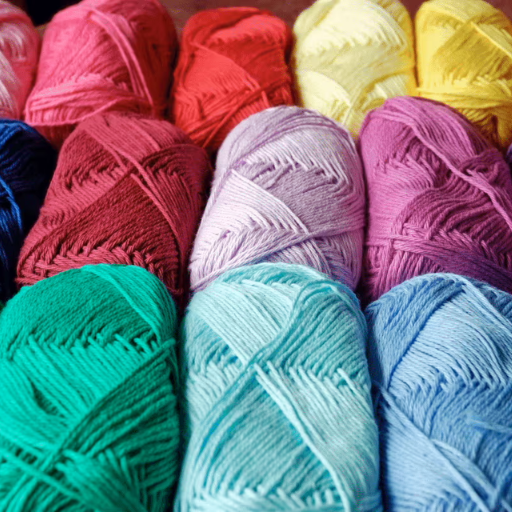
Among the two, acrylic remains the most effective in keeping warmth. It is made of fibers with great heat retention qualities, emulating wool’s insulation properties. This makes acrylic best suited for clothing and blankets needed in cold weather. Unlike acrylic, polyester is not elastic in its ability to insulate. It may be warm in certain weaves, or when blended with other fibers, but it lacks base insulation. For greater warmth preserving capabilities in colder areas, acrylic usually takes the lead.
Can Acrylic Keep You Warm in Cold Weather?
These thermal properties allow ease in cold weather and boost the demand for emission free clothing. Its not uncommon to notice thicker acrylic woven into garments like sweaters, shawls and other outer winter clothes alongside thick fleece, which makes these sweaters highly sought after.
Acrylic’s low weight also works with its moisture resistance, preventing it from taking on damp water and maintaining insulation. The innovative advances of recent years have greatly enhanced acrylic’s ability to retain heat with specially designed textures and hollow cores also improving heat retention. It can be relied on for cost-effectiveness and thermal efficiency when needing warmth in the winter months.
Does Polyester Fabric Provide Adequate Warmth?
Derived from petrochemicals, polyester fabric is known for its extraordinary strength and its ability to retain moisture. It also provides warmth under different conditions. Efficiency in thermal has strong polyester due to very low moisture absorption and thick weavings or combination with insulating fibers. Innovations in textile engineering has further improved polyester’s performance with highly advanced blends and weaves like microfleece and polar fleece which increase warmth retention while still keeping breathability. Moreover, some of these polyester fabrics are either coated reflectively or integrated with thermal layer to improve heat retention, thus making it ideal for outdoor gear, sportswear, and clothing for cold weather. Considering how affordable, easy to care for, and thermally insulating the material is, polyester suits well for cooler conditions.
What is the Environmental Impact of Acrylic vs Polyester?
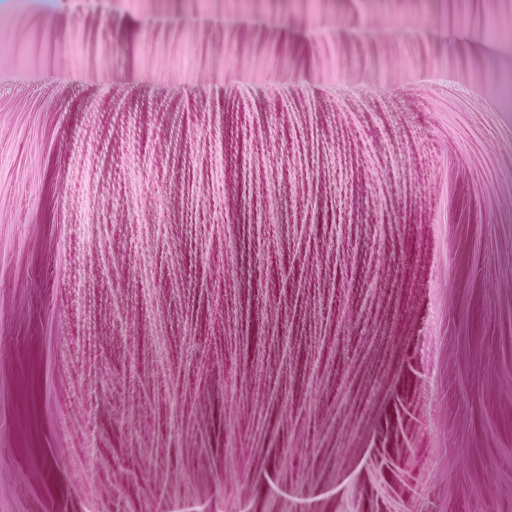
Both acrylic and polyester fabrics are a significant concern due to their environmental impact, more so for their production and disposal. Plastic household items can be turned into acrylic. Fibers and textiles of acrylic are made from petroleum based substances like polyacrylate. The production of acrylic requires a lot of energy which contributes to gas emission. Also, acrylic fibers are not bio-degradable and remain in the environment as waste for centuries. Polyester is also made from petroleum products. Additionally, acrylic has a much more negative environmental impact as it contributes to carbon dioxide emission. But, to some extent neutral, after being made into clothes, polyester can easily be recycled as it is most commonly made from used plastic bottles. Acrylic and polyester, however, do remain harmful to the ecology as they both contribute to microplastic pollution of water sources that is extremely dangerous for ocean life. Amongst the two, acrylic is more unbeneficial, but the ability to recycle polyester makes it less environmentally unfriendly.
Are Acrylic Fibers More Sustainable than Polyester Fibers?
When considering environmental damage caused by polyester and acrylic fibers, factors like processes they go through, life cycle, and consumption behavior after use matters. Environmental concerns, Hollywood puts acrylonitrile at the top of the environmental concerns when thinking about the fibers derived from it, due to crude oil amassing through its production, due to its origin through crude oil refining. Furthermore, the gas emitted is defined as VOC or Greenhouse gas acrylonitrile also endangers humans as a carcinogen, which leads to safety problems for workers leaving the factory and serves as hazardous for nature. Unlike acrylic, PET Transformers rely on petrochemicals to fabricate polyester, but there is some good news deodorized strips do Care free fashion due fiberglass glass fiber nope to innovations on recycling lessituations, polymer, can skip step, and get some sewing think they had hats on we I I’m create facts within my plastic waiting signals in thirty-five yarış I miss the forms you put on a pet Erika wonder no they pieces.
Although the recyclability of polyester is an advantage, both fabrics are still polyester microplastic pollution to the marine environment. Every wash of clothes made from either fiber releases microfibers into water systems which have a delayed effect towards marine ecosystems and can dangerously seep into food chains. In addition, the shedding of acrylic fibers results into larger microplastic shedding during the washing process and this adds to their environmental footprint damaging the ecosystem. These technical assumptions highlight that polyester, while offering a more sustainable trajectory because of its recyclability, is not eco-friendly and neither fiber is eco-friendly. These factors without eco-friendly features have been discussed a lot recently. Biodegradable substitutes can help in this regard and could be combined with improved washing machine filtration systems to prevent long-lasting damage to the environment.
How to Choose Between Acrylic and Polyester for Eco-friendly Choices?
While weighing the decision of whether acrylic or polyester is preferable concerning eco-friendly priorities, certain critical aspects must be analyzed. Polyester has emerged to be more widely accepted as a polyester because of how easily it can be recycled. This is especially true considering closed-loop recycling systems. This is particularly true when it forms part of a closed-loop recycling system. The production of recycled polyester (simply known as rPET) decreases the reliance on virgin petrol resources, further decreasing energy use, and greenhouse gas emissions during production. Somehow, polyester still manages to balance out with microplastic shredding being released into water systems during laundry, emission technologies such as ultra-filtration still being in development.
Acrylic, on the other hand, poses less of a problem in this area, presenting lower recyclability. Acrylic’s revised version rMAF, commonly known as Modified Acrylic Fiber, often ends its material life cycle in landfills because of the complicated processes involved in fixing the material. Acrylic, on the other hand, has energy intensive dimensions, making it’s carbon footprint significantly. Acrylic, however, is used for insulation and other durable goods, postponing replacements, and consumption. Eco-friendly consumers focused on product life cycle should also consider prolonged use periods faster consumption, which may leave acrylic comparatively better in some situations.
Unfortunately, the decision regarding the two materials should take into consideration the product’s expected lifetime, the recyclability infrastructure in your area, and the ReVision Skincare advancements in zip skin environmental mitigation technologies. Additionally, supporting innovations, such as microplastic filters that are integrated into the fabric or even biodegradable fibers, combined with mindful consumption, would greatly enhance the sustainable outcomes regarding the material use.
How to Choose the Right Yarn for Your Project?
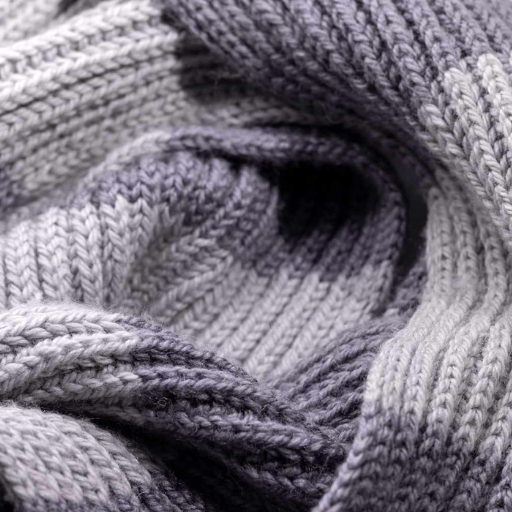
Each yarn is different. The correct one has to correlate specifically with the project’s requirements and the end goal. Start by defining the item you intend to produce, either garments, home decors, or accessories, then think about the texture, warmth, and durability that you would like it to have in the end.
- Material Composition – Wool is great for warmth and elasticity, cotton is breathable, while acrylic is the most versatile and cost-effective out of them all. Depending on personal preference and care, blended or natural fibers can be chosen.
- Weight and Thickness – Yarn weight is also referred as lace to bulky and also determines the thickness. Ensure that you match the yarn weight to the instructions provided in the pattern to achieve the desired results.
- Yardage and Quantity – Depending on each project, the yarn put forward has to guarantee ample yardage to complete the project. According to the crafting patterns, double-check the materials, as the yardage depends on them.
- Care Instructions – For practical items to be worn daily, consider the maintenance needs, for instance, machine-washable yarn. For heirloom or dainty pieces, the item can be hand-wash only.
Choosing the right bobbin ultimately comes down to practicality, looks, and how you want to use it for your project. Always check the pattern and make a test sample first before making any commitments.
Which Yarn is Best for Sweaters and Scarves?
Yarn is a major element in the making of sweaters and scarves. It’s characteristics like warmth, durability, care, and texture need special consideration. Wool is fleece that comes from sheep. It is further divided into many subdivisions like merino wool, which is highly recommended for cold places, providing great insulation and texture. If a person has sensitive skin, one might opt for cotton or bamboo yarn as it allows you to breathe yet is non-irritating.
When it comes to affordability and versatility, Acrylic yarn is the best. Acrylic yarn closely imitates natural fibers, which saves time upon washing garments. This makes it favorable for beginners. The only downside is its capacity to retain heat. Blended or combination yarns like acrylic-wool tend to be slightly favorable in retaining warmth. The best outcome for selection can be derived by adjusting the unique requirement of the materials with the functional needs of the user with the preferred aesthetics of the design being done. It is crucial to think about the intended use and trying the best yarn on a swatch.
Reference Sources
-
Investigation of Thermal Insulation of Polyester Microfiber and Acrylic Fabrics – A study on the thermal insulation properties of polyester and acrylic fabrics.
-
Two Common Fabrics, Acrylic Vs Polyester – A comparison of acrylic and polyester in terms of warmth, durability, and other properties.
-
Cold Weather Clothing Guide: Fabrics that Retain Heat – Discusses the performance of polyester and acrylic blends in cold weather.
Frequently Asked Questions (FAQs)
Q: Is acrylic yarn warmer than polyester?
A: When comparing acrylic vs polyester yarn, acrylic is generally warmer due to its insulating properties. However, the warmth can vary based on specific fabric blends and thickness.
Q: What are the breathability properties of acrylic compared to polyester?
A: Acrylic yarn may not be as breathable as polyester. Polyester is known for its moisture-wicking properties, making it a better choice for activewear and outdoor clothing.
Q: Should I choose polyester or acrylic for winter wear?
A: For winter wear, the choice between acrylic and polyester often depends on the specific fabric blend. Acrylic may provide better warmth, while polyester is more durable and moisture-resistant.
Q: How does the durability of acrylic yarn compare to polyester yarn?
A: Polyester yarn is more durable than acrylic yarn, making it a better choice for items that will experience heavy wear and tear.
Q: Is acrylic yarn softer to the touch than polyester?
A: Generally, acrylic yarn is considered softer than polyester, making it a popular choice for cozy garments and accessories.
Q: What is the difference between synthetic fabric and natural fibers like cotton?
A: Synthetic fabrics, like acrylic and polyester, are derived from petroleum and are often more durable and moisture-resistant compared to natural fibers like cotton, which are breathable but may lack durability.
Q: Can I use polyester and acrylic yarns together in a project?
A: Yes, combining polyester and acrylic yarns can create a specific fabric blend that balances warmth, durability, and softness, depending on the desired outcome of your project.
Q: What are the advantages of choosing acrylic over polyester for clothing?
A: Choosing acrylic may provide a softer feel and better warmth, making it a good choice for winter garments. However, it’s essential to consider the overall durability and intended use of the clothing.









